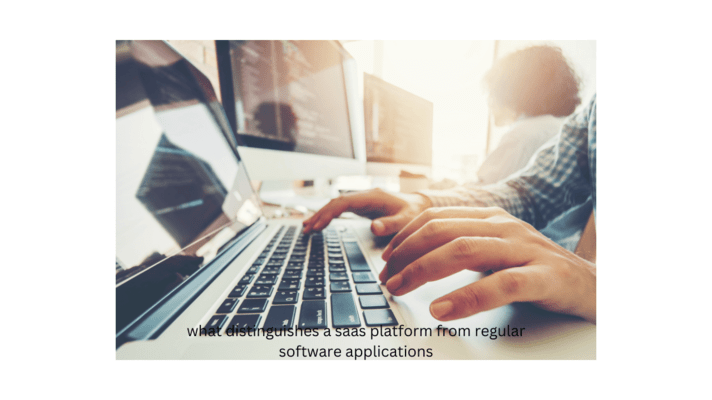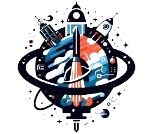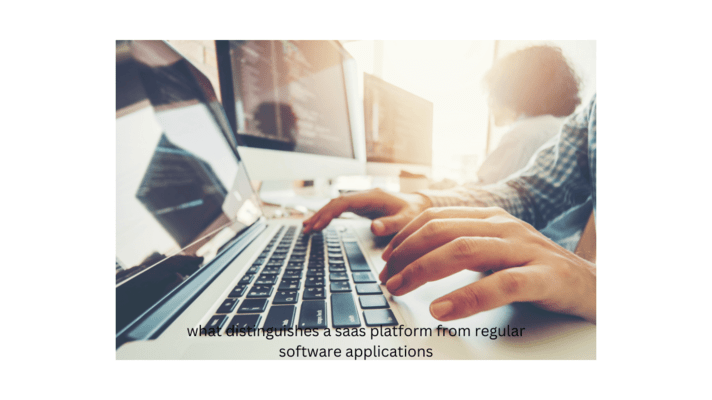In today’s computerized age, what distinguishes a saas platform from regular software applications, is the scene of computer program arrangements has advanced essentially. Conventional program applications, once the foundation of advanced operations, presently share the arrangement with a more current worldview known as a Computer program as a Benefit (SaaS) stage. Understanding the contrasts between these two approaches is basic for businesses looking to optimize their operations and maximize productivity.
Presentation to SaaS Stages vs. Standard Program Applications
Program as a Benefit (SaaS) stages and normal computer program applications serve comparative purposes but work on a very basic level with diverse standards. Whereas conventional computer program applications are introduced on personal computers or servers, SaaS stages are facilitated centrally and accessed remotely through the web. This crucial refinement lays the foundation for various separating components. What Distinguishes a SaaS Platform from Regular Software Applications?
Understanding the Concept of Program as a Benefit (SaaS)
At its center, SaaS may be a program dispersion demonstration that permits clients to get to applications via the web on a membership premise. Rather than acquiring and introducing computer programs on personal gadgets, clients can basically log in to the SaaS stage through a web browser, getting to the same highlights and functionalities from any area with a web network.
Key Characteristics of SaaS Stages
Openness
One of the essential focal points of SaaS stages is their availability. Clients can get to the stage from any gadget with an online association, dispensing with the requirements for particular equipment or computer program setups.
Membership Show
SaaS stages regularly work on a subscription-based estimating demonstration, advertising clients adaptable installment choices based on utilization, highlights, or the number of clients. This approach permits businesses to scale their utilization and costs according to their needs. What Distinguishes a SaaS Platform from Regular Software Applications?
Versatility
SaaS stages are inalienably adaptable, permitting businesses to effortlessly alter their utilization and assets as their needs advance. Whether it’s including modern clients, extending capacity capacity, or joining extra highlights, SaaS stages can oblige development consistently.
Overhauls and Support
Not at all like conventional program applications that require manual upgrades and support, SaaS platforms are upgraded consequently by the supplier. This guarantees that clients continuously get to the most recent highlights, security patches, and execution improvements without any extra exertion. What Distinguishes a SaaS Platform from Regular Software Applications?
Separating Variables of SaaS Stages
Multi-Tenancy
SaaS stages regularly utilize a multi-tenancy design, permitting numerous clients or organizations to share the same occurrence of the application while keeping up information separation and security.
Customization
Whereas conventional computer program applications may offer constrained customization choices, SaaS stages are regularly exceedingly customizable, permitting clients to tailor the application to their particular needs and workflows.
Integration Capabilities
SaaS stages are planned to coordinate consistently with other applications and administrations, encouraging interoperability and information trade over diverse frameworks. This integration capability improves productivity and collaboration inside organizations. What Distinguishes a SaaS Platform from Regular Software Applications?
Client Involvement
SaaS stages prioritize client encounters, advertising instinctive interfacing, streamlined workflows, and responsive bolster administrations. This center on ease of use and availability improves efficiency and client fulfillment.

Preferences of SaaS Stages over Standard Program Applications
Cost-effectiveness
SaaS stages regularly offer lower forthright costs and unsurprising subscription-based estimating, making them more reasonable for businesses of all sizes. Moreover, SaaS disposes of the requirement for costly equipment investments and ongoing upkeep costs. What Distinguishes a SaaS Platform from Regular Software Applications?
Openness and Comfort
With SaaS stages, clients can get to applications from anywhere, at any time, utilizing any gadget with a web network. This openness cultivates collaboration, inaccessible work, and adaptability in today’s energetic commerce environment.
Versatility and Adaptability
SaaS stages can scale up or down rapidly and effortlessly to oblige changing commerce needs. Whether it’s including modern clients, growing capacity capacity, or adjusting to regular variances, SaaS stages offer unparalleled flexibility and deftness.
Challenges Confronted by SaaS Stages
Security Concerns
Whereas SaaS stages offer various security highlights and conventions, they may still be powerless against cyber dangers and information breaches. Guaranteeing strong security measures and compliance benchmarks is fundamental to ensuring delicate data and keeping up with clients. What Distinguishes a SaaS Platform from Regular Software Applications?
Reliance on Web Network
Since SaaS stages depend on web networks, downtime or disturbances in benefit can essentially affect efficiency and operations. Executing reinforcement frameworks, redundancies, and solid web associations is significant to moderate these dangers.
Information Movement and Integration or What Distinguishes a SaaS Platform from Regular Software Applications
Moving information to a SaaS stage and joining it with existing frameworks can be complex and time-consuming. Ensuring data compatibility, judgment, and exactness amid the relocation preparation is basic to maintain a strategic distance from disturbances and keep up commerce coherence.
Conclusion
In conclusion, the refinement between SaaS stages and normal computer program applications lies in their basic design, conveyance show, and key characteristics. Whereas both serve comparable purposes, SaaS stages offer interesting points of interest in terms of openness, versatility, customization, and integration capabilities. By understanding these contrasts and grasping the benefits of SaaS, businesses can streamline their operations, upgrade efficiency, and stay competitive in today’s advanced scene. What Distinguishes a SaaS Platform from Regular Software Applications?
FAQs
Are SaaS stages appropriate for all sorts of businesses?
SaaS stages are flexible and can be adjusted to suit a wide extend of commerce needs and businesses. In any case, businesses ought to survey their particular prerequisites and conduct careful investigations to guarantee compatibility and reasonableness.
How do SaaS stages guarantee information security and protection?
SaaS suppliers execute strong security measures, counting encryption, get-to controls, and standard reviews, to secure information from unauthorized get-to, breaches, and cyber dangers. Also, numerous SaaS stages comply with industry-specific controls and measures to maintain information protection and compliance.
Can SaaS stages be customized to fit unique trade forms?
Yes, one of the key preferences of SaaS stages is their adaptability and customizability. Users can regularly design the stage to adjust to their particular workflows, inclinations, and trade necessities through settings, integrative, and add-ons.
What are a few common misinterpretations approximately SaaS stages?
One common misguided judgment is that SaaS stages are less secure than conventional program applications. In reality, SaaS suppliers contribute intensely to security measures and compliance measures to ensure user data and keep up belief.
How can businesses guarantee a smooth move to a SaaS stage?
To guarantee a smooth move, businesses ought to completely assess potential SaaS suppliers, conduct pilot tests or trials, prepare representatives on the unused stage, and create a comprehensive movement arranged with clear timelines, breakthroughs, and possibilities.

